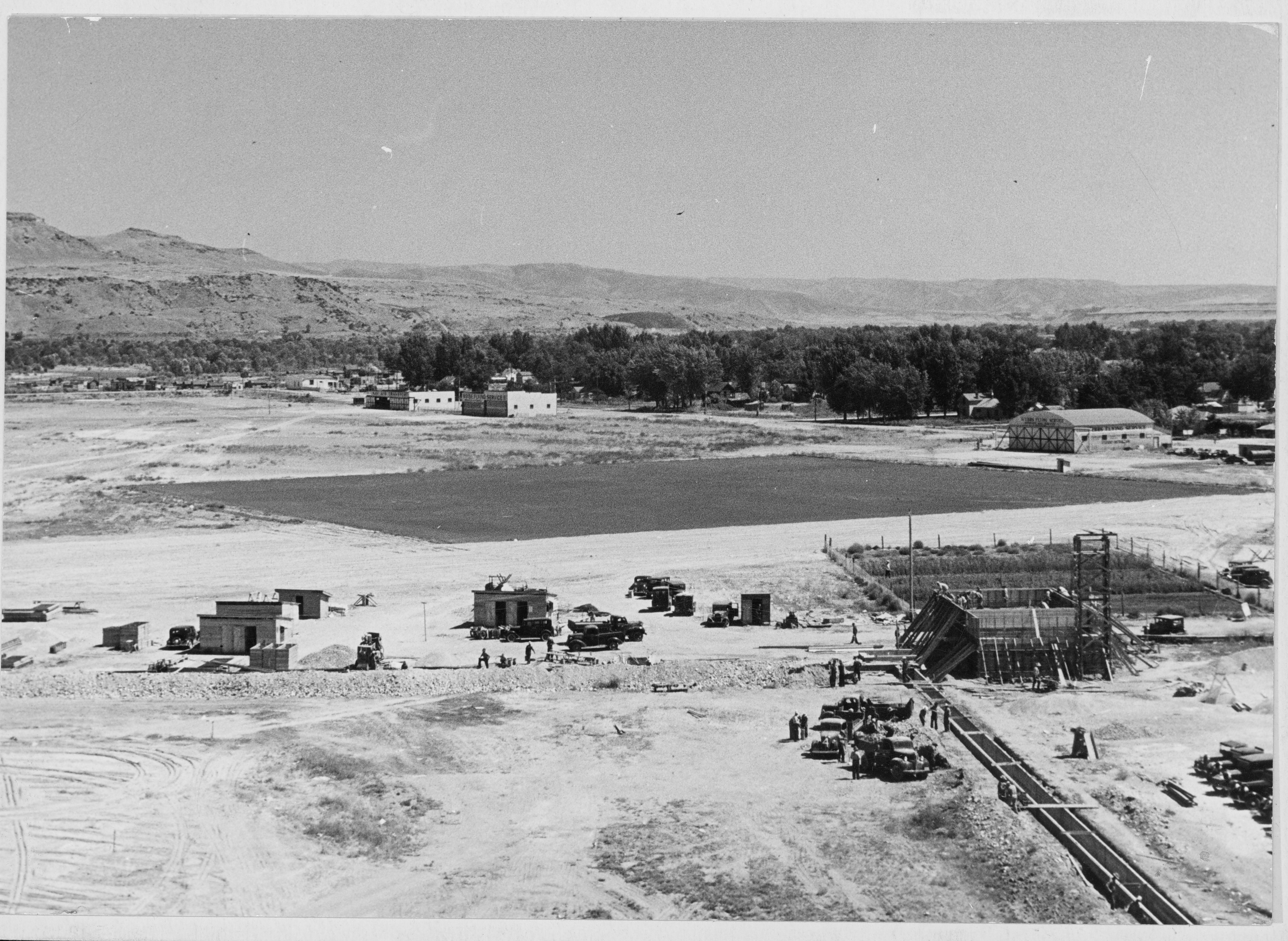
A few days after the Administration Building opened in the fall of 1940, Boise Junior College’s heating plant also reached completion.
The heating plant initially used coal, then heavy diesel oil (which made the noticeable chimney obsolete), and now uses natural gas. The expanded and modernized facility heats most of the buildings between the north side of University Drive and the Boise River with an elaborate underground system — from the Morrison Center on the west end of campus to Albertsons Stadium near the east end. The nearly 90-foot chimney remains — even though it has not functioned in decades.
The transition from a heavy diesel oil to a geothermal system was a careful decision by the university. In the spring semester of 1975, Boise State offered internships to students to study geothermal energy and how to implement changes to the current heating system. Their study revealed that from 1978-1979 the heating plant consumed 1,039,000 therms of natural gas, which cost approximately $286,000. With their study, students and professors estimated the price of geothermal would cost the university approximately $163,500, accompanied with a higher efficiency rate.
Sixteen buildings connected with the original heating plant were directly affected by the change from diesel oil to geothermal heat: the Administration building, Music Auditorium, Music-Drama building, Morrison Hall, Driscoll Hall, Science Building, Gymnasium, Albertsons Library, Liberal Art building, Student Union, Business, Physical Education (Auxiliary Gymnasium and Pool), Special Events Center, both Science Education buildings, Campus School building, and the Multi-Purpose Pavilion.
Despite the students’ and professors’ efforts, progress toward geothermal took time. On January 22, 1988, the City of Boise granted Boise State $50,000 to determine the benefits and best site for an injection well.
Written by Annika Severts, Spring 2018 intern